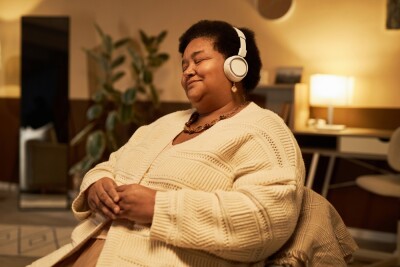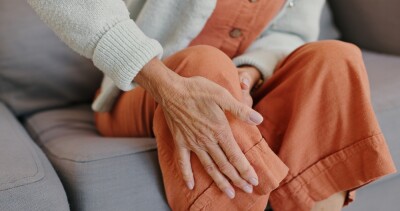Regular exercise should be part of cancer care for all patients
Including exercise or sport as part of cancer care can significantly improve symptom management, quality of life and fitness during and after treatment, French researchers have concluded in two presentations to be reported at the European Society for Medical Oncology 2018 Congress in Munich, Germany. Even among patients at highest risk of poor quality of life, exercise can make a difference.
More than 3,500 patients with cancer already participate in exercise programs each year at over 80 cancer centers in France, at a cost of approximately $450 per patient, and the number continues to rise, explained Thierry Bouillet, MD, Medical Oncologist, Ile de France, American Hospital of Paris, Neuilly Sur Seine, France, and author of one of the new studies. Classes are run by trainers with specialist knowledge of cancer and its treatment who can adapt exercise programs to individual needs.
"We have found that patients get the greatest benefit if they exercise two or three times a week for at least an hour during the six months of their chemotherapy or radiotherapy and then for a further six months so that physical activity becomes a part of their life," said Bouillet. "With 20 years' experience, we have also seen that patients find it easier to exercise in on-site classes and feel more secure than if we give them exercise information and leave them to do it themselves or go to classes away from the hospital with trainers who do not know about the special needs of patients with cancer.”
In one of the French studies to be presented at ESMO, twice-weekly, 60-minute strength training and aerobic exercise classes significantly reduced pain and fatigue scores at 3 and 6 months in 114 patients undergoing cancer treatment, 83 percent for breast cancer and 21 percent with metastatic disease. Fatigue scores fell from 3.3 at baseline to 2.8 (p<0.05) at three months and pain scores from 2.8 to 2.3 respectively (p<0.05). In 71 patients with data at baseline and six months, fatigue scores fell from 3.1 at baseline to 2.1 at six months (p<0.05) and pain scores from 3 to 1.9 respectively (p<0.05).
There were also significant reductions in body fat, while lean body mass remained stable. In the overall group, fat mass fell from 33.9 percent at baseline to 33.2 percent at three months (p<0.05), while lean body mass remained stable (43.6 and 43.8 kg respectively). In the 71 patients with six-month data, fat mass fell from 34.3 percent at baseline to 32.4 percent at six months, while lean mass was 42.8 kg at both time points. In addition, significant improvements were seen in overall fitness in terms of quadriceps endurance, strength of both arms and non-dominant leg balance (p<0.05 for all).
"Patients are often fatigued and have started to lose muscle before they are diagnosed with cancer, so it is essential to start exercise as soon as possible after the first consultation,” said Bouillet. “We should see it as emergency treatment for their initial symptoms and later to help with the side effects of treatment,"
In a second study to be presented at ESMO 2018, researchers not only reported the value of exercise for patients with cancer, but also demonstrated that it is possible to identify patients at greatest risk of poor quality of life during treatment so they can receive extra help.
In the study of 2525 patients with stage I-III breast cancer undergoing adjuvant chemotherapy, those who took 75 minutes of vigorous or 150 minutes of moderate exercise per week had significantly better overall quality of life at six and 12 months after treatment than those who were inactive. They also had significantly better physical well-being and less fatigue, pain and breathlessness. Vigorous exercise included activities such as aerobic dance, heavy gardening or fast swimming, while moderate exercise included brisk walking, water aerobics or volleyball.
"Around 60 percent of patients were physically active before and after chemotherapy and, although their quality of life was adversely affected by chemotherapy, they scored consistently better on a variety of physical, emotional and symptom scales than those who were inactive," said Antonio Di Meglio, MD, study author and Medical Oncologist, Institut Gustave Roussy, Villejuif, France.
The study showed that patients who had a mastectomy or additional illnesses, smoked or had a low income were particularly at risk of poor quality of life following chemotherapy for breast cancer, but they too benefited from exercise.
"Using a novel approach, we showed that it is possible to identify breast cancer patients whose quality of life will be worst affected by chemotherapy, so we can now target those patients for dedicated interventions including those aimed at increasing physical activity to [World Health Organization] recommended levels," said Di Meglio.
Commenting from ESMO, Dr. Gabe Sonke, Medical Oncologist, Netherlands Cancer Institute, Amsterdam, the Netherlands, underlined the importance of the French studies in demonstrating the value of physical therapy in everyday clinical practice, previously seen in clinical trials and supported by current ESMO recommendations for exercise as part of standard care for all cancer survivors.
"The insights from the new studies in patients with metastatic breast cancer are particularly timely as a large study is getting underway from the international PREFERABLE Consortium to further explore the value of exercise in this group of patients," he said.
Sonke pointed out that this and other studies are endeavouring to confirm early signs that physical activity programmes may improve adherence to chemotherapy and radiotherapy and thus improve treatment outcomes so that insurance companies are more encouraged to pay for exercise initiatives.
"Insurers may ask why they should pay for exercise for patients with cancer when they don't pay for it in the general population. But if we can show that there is improved treatment adherence and an added survival benefit for patients with cancer, this will strengthen our case for payment," said Sonke.
He also wants to see more patients routinely asked to participate in exercise programs, including those who do not normally exercise.
"We know that patients who are already active are getting into these exercise programs, but those who are not active are missing out, particularly those with low income and less healthy lifestyle,” he said. “The new results must encourage us to focus on how to be more inclusive so that all patients can benefit from exercise in improving quality of life during chemotherapy.”




















SHARE